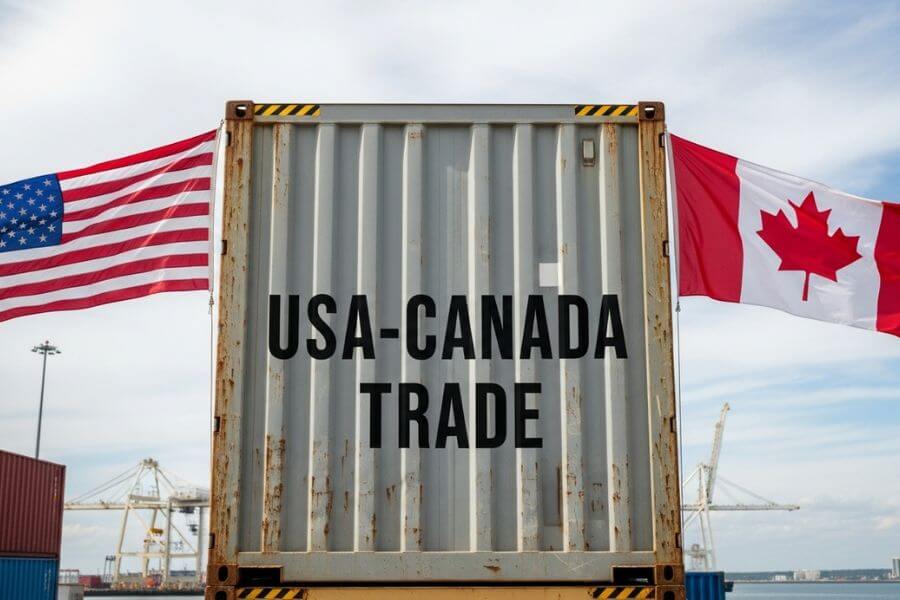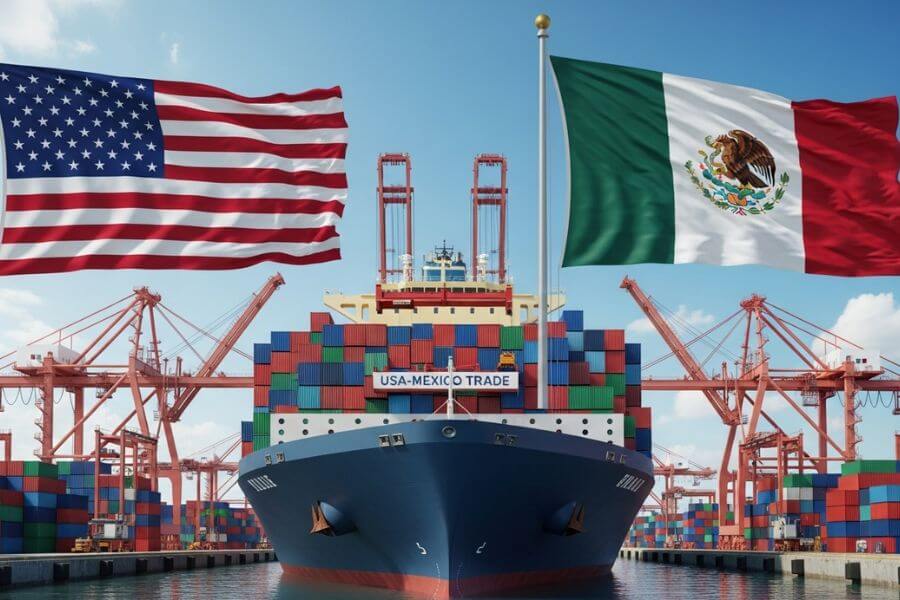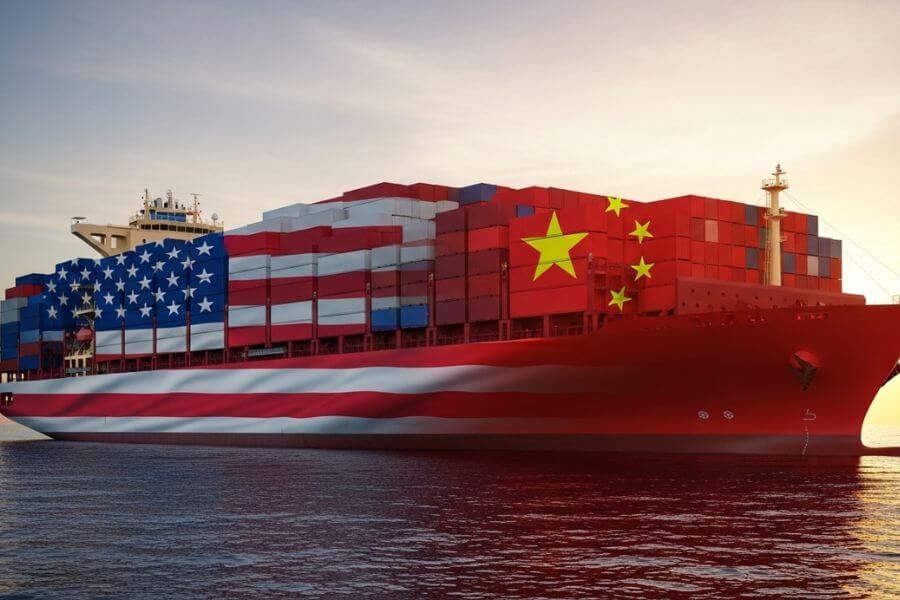The economic partnership between the United States and Canada is one of the strongest and most interconnected in the world. As two neighboring nations sharing the world’s longest international border, their trading relationship is built on trust, integration, and mutual dependence. From automobiles and energy products to agricultural goods and advanced technology, the flow of imports and exports between the U.S. and Canada fuels millions of jobs and supports entire industries on both sides.
In this article, we break down the top 10 most traded goods between the U.S. and Canada, exploring why each category matters, how it contributes to cross-border commerce, and the economic forces that drive demand. Whether you’re a logistics professional, business owner, investor, or simply interested in global trade dynamics, this guide will give you an overview of the goods shaping North America’s economic engine.
1. Automobiles & Auto Parts
Automobiles and auto parts consistently rank as the largest traded category between the U.S. and Canada. The automotive industry in North America operates as a deeply integrated supply chain, with vehicle parts crossing the border dozens of times before a single car is completed. Major manufacturing hubs in Michigan, Ontario, and Quebec work together seamlessly, using shared platforms, components, and suppliers. The U.S. exports engines, transmissions, electronics, and steel components to Canada, while Canada exports fully assembled vehicles, OEM parts, aluminum components, and specialty tooling back to the United States. This sector supports hundreds of thousands of jobs and is a key driver behind the USMCA’s emphasis on regional vehicle content requirements.
2. Petroleum & Crude Oil
Energy is one of Canada’s largest exports to the United States, with crude oil and refined petroleum products leading the category. Canada is the single largest foreign supplier of oil to the U.S., accounting for more than half of U.S. crude imports. Alberta’s oil sands, Saskatchewan’s heavy crude, and offshore production in Newfoundland all play major roles. The U.S., in turn, exports refined petroleum products, natural gas liquids, and specialized petrochemical materials to Canada. This two-way trade is vital because the U.S. has extensive refining capacity, while Canada has abundant natural resources. Energy pipelines, rail networks, and marine routes keep this cross-border flow efficient and stable, making petroleum one of the most strategically important traded goods in North America.
3. Machinery & Industrial Equipment
Another leading category is industrial machinery, which includes construction equipment, manufacturing machinery, HVAC systems, engines, pumps, and advanced robotics. The U.S. is a major exporter of high-value industrial equipment to Canada, especially for sectors such as mining, construction, agriculture, and oil extraction. Canada also exports specialized machinery, particularly for resource extraction and processing, back to the U.S. The constant flow reflects deep interdependency between U.S. industrial innovation and Canada’s natural resource-heavy economy. As both countries modernize their manufacturing sectors with automation and digitalization, machinery trade continues to expand significantly.
4. Plastics & Plastic Products
The U.S. and Canada trade millions of tons of plastics and plastic-based materials each year. This category includes raw resins, industrial plastics, consumer goods, packaging materials, and automotive-grade plastics. The U.S. petrochemical industry produces massive quantities of resin and polymer feedstock, which Canada imports for manufacturing. Canada, particularly Ontario and Quebec, exports high-value plastic parts used in automotive, aerospace, and medical device manufacturing. Because plastics are used in almost every industry, from construction to consumer goods, this category remains one of the most active and essential components of bilateral trade.
5. Electrical Machinery & Electronics
Electric motors, circuit boards, communications equipment, semiconductors, consumer electronics, and industrial control systems dominate the electrical machinery trade between the U.S. and Canada. The U.S. exports a significant volume of high-tech equipment to Canada, supporting industries such as telecommunications, aerospace, transportation, and healthcare. Meanwhile, Canada exports electronic components, avionics systems, and telecommunications hardware to the U.S., driven by strong production hubs in Ontario and British Columbia. As both nations continue to expand digital infrastructure, renewable energy systems, and electric vehicles, this category is projected to grow even more rapidly.
6. Agricultural Products & Food
Agriculture has always been a cornerstone of U.S.-Canada trade, with goods such as wheat, corn, soybeans, beef, pork, poultry, dairy products, fresh fruits, and processed foods moving in both directions. The U.S. is a major supplier of grains, oilseeds, and processed foods to Canada, while Canada exports specialty crops, canola, maple products, meat, and seafood to the United States. Seasonal demand plays a big role: the U.S. supplies a large portion of Canada’s winter fruit and vegetable imports, while Canada’s food exports peak during harvest seasons. Cross-border food trade supports grocery stores, restaurants, suppliers, farmers, and manufacturers in both countries.
7. Chemicals & Pharmaceuticals
Chemicals, both industrial and consumer-grade, represent a significant portion of bilateral trade. This includes pharmaceuticals, fertilizers, industrial chemicals, cleaning agents, and specialty chemicals used in manufacturing. The U.S. exports many high-value pharmaceutical products and medical chemicals to Canada, while Canada supplies chemical feedstock and industrial materials used in plastics, automotive manufacturing, and refining. Both nations benefit from shared regulatory standards, strong research institutions, and advanced healthcare systems that require continuous cross-border flow of medical and chemical products.
8. Aluminum & Metal Products
Canada is one of the world’s largest producers of aluminum, thanks to hydroelectric power and strong mining operations. As a result, Canada exports large volumes of aluminum ingots, sheets, and automotive-grade aluminum components to the U.S. The American automotive and aerospace industries rely heavily on these imports because they provide lightweight, high-strength materials crucial for vehicle and aircraft manufacturing. The U.S. also exports steel, iron, and fabricated metal products to Canada, balancing the trade relationship. Despite occasional trade tensions, metal trade remains essential to manufacturing sectors in both countries.
9. Wood, Pulp & Paper Products
Canada’s vast forests make it a leading global exporter of lumber, pulp, paper, and wood products, a category that plays a major role in trade with the United States. U.S. demand for softwood lumber is consistently high due to the housing and construction sectors. Canada also exports pulp used to manufacture packaging, tissues, and paper products. Meanwhile, the U.S. exports certain grades of paper, packaging materials, and processed wood goods to Canada. Although the lumber trade has faced long-standing disputes over tariffs and production quotas, the economic necessity of cross-border wood trade ensures a constant flow of materials.
10. Technology, Aerospace & Advanced Equipment
Rounding out the list, aerospace products, advanced technology systems, and scientific equipment account for a growing share of U.S.-Canada trade. The U.S. exports high-value aerospace components, software systems, satellites, and research equipment to Canada. Canada, especially through aerospace hubs in Quebec, exports aircraft parts, landing gear systems, flight control systems, and maintenance equipment to the United States. Both countries are global leaders in aerospace engineering, making this category particularly innovation-driven. With the rise of electric aviation, unmanned aerial systems, and new manufacturing technologies, this sector is expected to expand significantly in the coming years.
Conclusion
The trading relationship between the United States and Canada is a powerful example of economic cooperation at its best. These top 10 traded goods demonstrate how intertwined the two economies are, from the cars people drive and the food they eat to the technology they rely on daily. As the global economy evolves and new industries emerge, the U.S.-Canada partnership will remain one of the most important trade corridors in the world. Whether you’re in logistics, manufacturing, retail, or investment, understanding these trade categories provides valuable insights into market trends, supply chain strategies, and future business opportunities.











